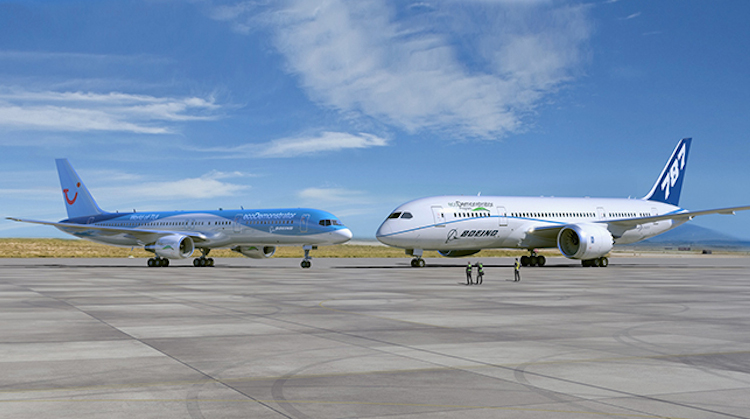
Two Australian-developed innovations will be among 25 new technologies to be tested as part of Boeing’s latest ecoDemonstrator flight test program.
Boeing 787-8 test aircraft ZA004 will begin its month-long ecoDemonstrator flight test campaign “any day now”, according to Julie Felgar, managing director of Boeing Commercial Airplanes environmental strategy.
“The 787 is going to have 25 new technologies on it. We have partnerships with JAL, Delta, NASA, the FAA, Rolls-Royce, Honeywell and other suppliers like Panasonic,” Felgar told Australian media in Seattle on Friday.
The 787 ecoDemonstrator program aims to test and validate a range of technologies that could reduce aircraft fuel-burn and manufacturing costs, ranging from new laminar-flow wing coatings, a ceramic-matrix composite engine nozzle (which could allow engines to run hotter, and thus burn fuel more efficiently) and providing pilots with real-time wind information so they can select optimum cruising altitudes.
The ecoDemonstrator program “is really dedicated to fast-track testing and development of new technologies that are related to environmental efficiency for our new airplanes,” Felgar said.
Australia’s connection to the 787 ecoDemonstrator is outer-wing access doors made from recycled composite scrap and a single-piece composite aft engine pylon fairing.
The new wing access door has been developed by Boeing Aerostructures Australia.
“When we’re building composite structures there is composite scrap that comes off the building of those structures,” explained Felgar.
“What you have to do is you take the scraps, you have to go through a process where you reheat and form the scraps into the composite layup that you need, and then you bake it into a hardened form.”
Felgar estimates that “it is reducing emissions from manufacturing by 30 per cent if you are re-using that [scrap] material.”
The second project ecoDemonstrator project with Australian involvement has seen Boeing Research and Technology Australia work with Boeing Research and Technology Canada to develop a resin-infused engine pylon aft fairing.
“Working with Boeing Research and Technology Australia and our BRT centre in Canada we identified how we could do a one-piece design instead of a two-piece design and we do that through resin infusion. Basically you lay out the composite material, you bag it, you take the resin and you shoot it and then you use atmospheric pressure to cook the part together,” Felgar explained.
“What that has done is reduce the weight by 20 to 30 per cent and it also a 50 per cent cost saving in manufacturing because it is one step instead of two and it is [using] much less material.”
Under the ecoDemonstrator program Boeing has already flight-tested a leased American Airlines 737-800 fitted with an active engine vibration reduction system and a regenerative fuel cell, which could in time be used as an aircraft auxiliary power source.
Then in 2015 Boeing will flight test a Tui 757-200 modified with active flow control technology on the aircraft’s vertical tail, aimed at reducing rudder sideforce and drag, thus allowing future aircraft to be designed with smaller vertical tails.















